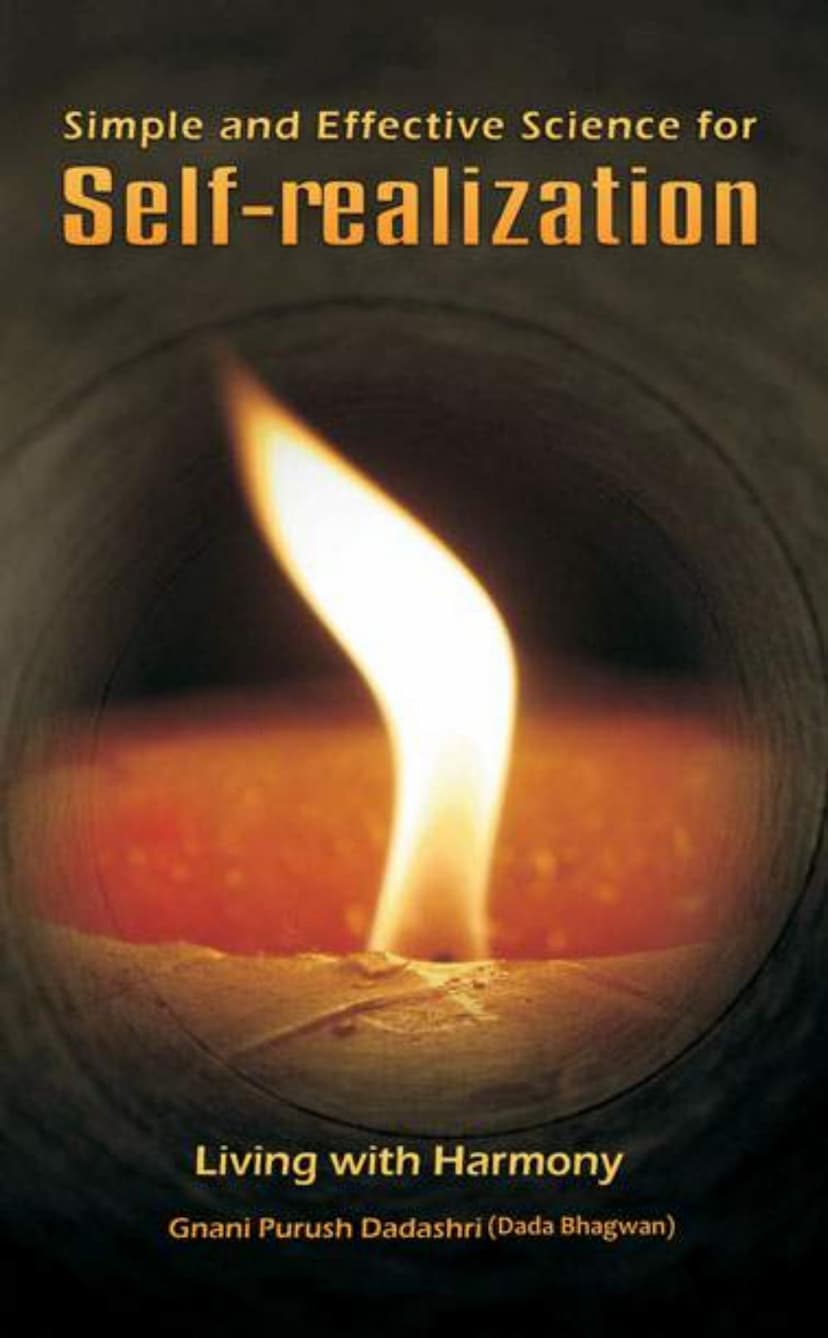Science For Self Realization
Added to library: September 2, 2025

Summary
Here's a comprehensive summary of the Jain text "Science For Self Realization" by Dada Bhagwan, based on the provided pages:
Core Message: The Science of Akram Vignan for Self-Realization
The book introduces Akram Vignan, a unique and direct "stepless" path to Self-realization, meaning it's a shortcut to spiritual awakening without the need for arduous, step-by-step ascetic practices. This science was revealed by Gnani Purush Dada Bhagwan (Ambalal M. Patel) through a profound spiritual experience in 1958.
The Nature of the Gnani Purush and Dada Bhagwan:
- Gnani Purush A.M. Patel (Dadashri): He was an ordinary family man and contractor who, through a miraculous 48-minute process, attained complete Self-realization. His ego dissolved, and he became an instrument for the salvation of humankind. He remained detached from his body, speech, and actions, living by the principle of "no commerce in religion, and religion in all commerce." He never took money for personal use, instead using his business profits for pilgrimages for his devotees.
- Dada Bhagwan: This is the name Dadashri gave to the Lord, the fully manifested Self, that resided within him. He emphasized that Dada Bhagwan resides within everyone, but is fully expressed only in the Gnani Purush. Dadashri stated, "I am not Dada Bhagwan. He resides within me, and I bow down to Him."
The Path of Akram Vignan:
- The Gnan Vidhi: This is the core scientific process of Akram Vignan. It's a 48-minute session where the Gnani Purush imparts experiential knowledge of the Self and the science of separation between the Self ("I") and the non-Self ("my"). It's described as a "divine original scientific experiment."
- Attaining Self-Realization: Through the Gnan Vidhi, one can attain Atma Gnan (Self-knowledge) and the direct experience of the Soul (Shuddhatma). This leads to inner peace, destruction of ignorance and wrong beliefs, and freedom from the cycle of birth and death.
- Five Directives (Agnas): After the Gnan Vidhi, seekers are given five principles or directives to follow. These Agnas are crucial for protecting the attained Gnan, sustaining the experience of the Self, and making progress. They are considered the sole spiritual practice needed.
- "I" vs. "My": A fundamental teaching is the scientific separation of "I" (the Soul) from "my" (possessions, body, relationships, ego, mind, intellect, etc.). This separation is essential for recognizing the true Self. The book explains how the Gnani Purush can facilitate this separation at subtle levels that ordinary intellect cannot grasp.
Key Concepts and Principles:
- Goal of Human Life: The ultimate goal is moksha (liberation) – attaining one's absolute Self. While worldly happiness is sought, true and permanent happiness lies within the Self.
- Karma: Karma is bound by the belief of "I am the doer." When one knows, "I am not the doer," karma is shed. Intentions, not actions, bind karma.
- Two Stages of Liberation:
- Present Liberation (Jivanmukti): Experiencing freedom from inner turmoil and indifference to worldly pains while living.
- Final Liberation (Moksha): Complete exhaustion of all karma and freedom from the cycle of birth and death.
- Eternal Bliss: True happiness is permanent and within the Self. The search for happiness in temporary external things is illusory.
- Gnani Purush as the "Greatest Scientist": A Gnani Purush is described as the greatest scientist because they understand the nature of the Self and the non-Self and can separate them. They can also destroy sins, grant divine vision, and provide complete solutions to life's mysteries.
- Difference Between a Saint and a Gnani Purush: A saint guides towards good deeds, while a Gnani Purush liberates from both good and bad deeds and is the final destination.
- The Kramic vs. Akram Path: The Kramic path is step-by-step and takes immense effort over a long time. The Akram path is like an elevator, a shortcut to liberation while continuing with worldly life.
- Grace of the Gnani: Progress and Self-realization are primarily through the grace of the Gnani Purush. Following His Agnas is the way to remain within this grace.
- Pratikraman: This is a process of recalling, repenting, apologizing, and resolving not to repeat mistakes. It's a crucial tool for clearing karmic accounts and purifying oneself.
- "Whatever has happened is Justice" & "The Fault is of the Sufferer": These are fundamental principles of understanding the world from nature's perspective. Nature is always just, and suffering arises from one's own past mistakes or accounts. Blaming others only increases suffering.
- Adjust Everywhere & Avoid Clashes: These are practical guidelines for living harmoniously in the world. Adjustment with everyone and avoiding conflicts are presented as the highest religion and a path to peace and liberation.
How to Attain Gnan:
- Meeting a Living Gnani Purush: The knowledge of the Self is not found in books alone; it resides in the heart of a Gnani. One must meet a living Gnani Purush to receive the experiential knowledge of the Self.
- Satsang: Direct, live interaction with a Gnani Purush (or their designated successor like Pujya Deepakbhai Desai) is highly valuable for understanding the Gnan and progressing. Reading books and listening to recordings are supplementary but direct satsang is emphasized.
- No Change of Religion or Guru: This Gnan does not require changing one's religion or leaving their existing guru.
- Free of Charge: The Gnan Vidhi and the knowledge are given without any cost.
Legacy and Continuity:
The book highlights that Dadashri blessed Dr. Niruben Amin to continue his mission, and after her, Pujya Deepakbhai Desai is currently imparting the knowledge of Akram Vignan and Atma Gnan worldwide.
In essence, "Science For Self Realization" presents a clear, scientific, and direct path to achieve lasting inner peace and liberation, accessible to everyone, by understanding and applying the teachings of Gnani Purush Dada Bhagwan.